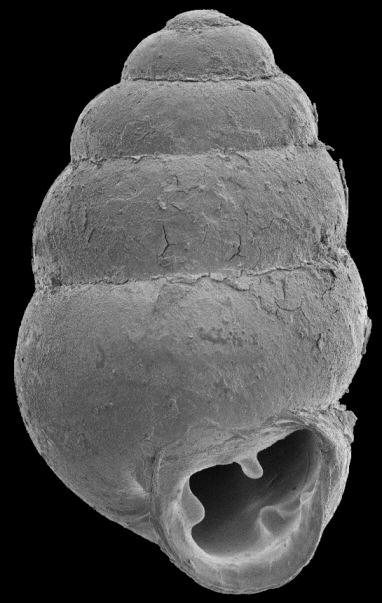
Nutrition
 Vertigo
tridentata are herbivorous. They feed on any kind of algae,
seaweed, plants, fungi, and other vegetation. These snails have a
specific way of obtaining these nutrients and that is by use of
their radula. The radula is a rough, tongue-like structure that has
numerous hard, chitinous teeth which are used for scraping and
tearing food off of hard surfaces. The Honey Vertigo have a complete
digestive system and have a separate mouth and anus. However, due to
the extremities of torsion, the anus and mantle cavity, where waste
is stored, is brought forward in a position above the head (Hickman,
2009).
Vertigo
tridentata are herbivorous. They feed on any kind of algae,
seaweed, plants, fungi, and other vegetation. These snails have a
specific way of obtaining these nutrients and that is by use of
their radula. The radula is a rough, tongue-like structure that has
numerous hard, chitinous teeth which are used for scraping and
tearing food off of hard surfaces. The Honey Vertigo have a complete
digestive system and have a separate mouth and anus. However, due to
the extremities of torsion, the anus and mantle cavity, where waste
is stored, is brought forward in a position above the head (Hickman,
2009).
V. tridentata, as well as most organisms from the Phylum Mollusca, have a three-chambered heart and an open circulatory system. An open circulatory system uses the heart, some blood vessels, and also blood sinuses. The way an open circulatory system works is the heart pumps the blood out through the limited amount of vessels, and from the vessels the blood enters these blood sinuses where it slowly disperses through the tissues delivering the oxygen. The slower distribution of oxygen and nutrients means slower movements by the snail and as we all know, we make the correlation between snails and slow speed (Hickman, 2009).
The snails also have a pair of nephridia which can be considered similar to the kidneys of humans. They remove the wastes and excess water from the coelem of the snail and move it to the mantle cavity where it can be discarded of (Hickman, 2009).
Moving along to the photo
Gallery of V. tridentata.
Or, return to the Home page.